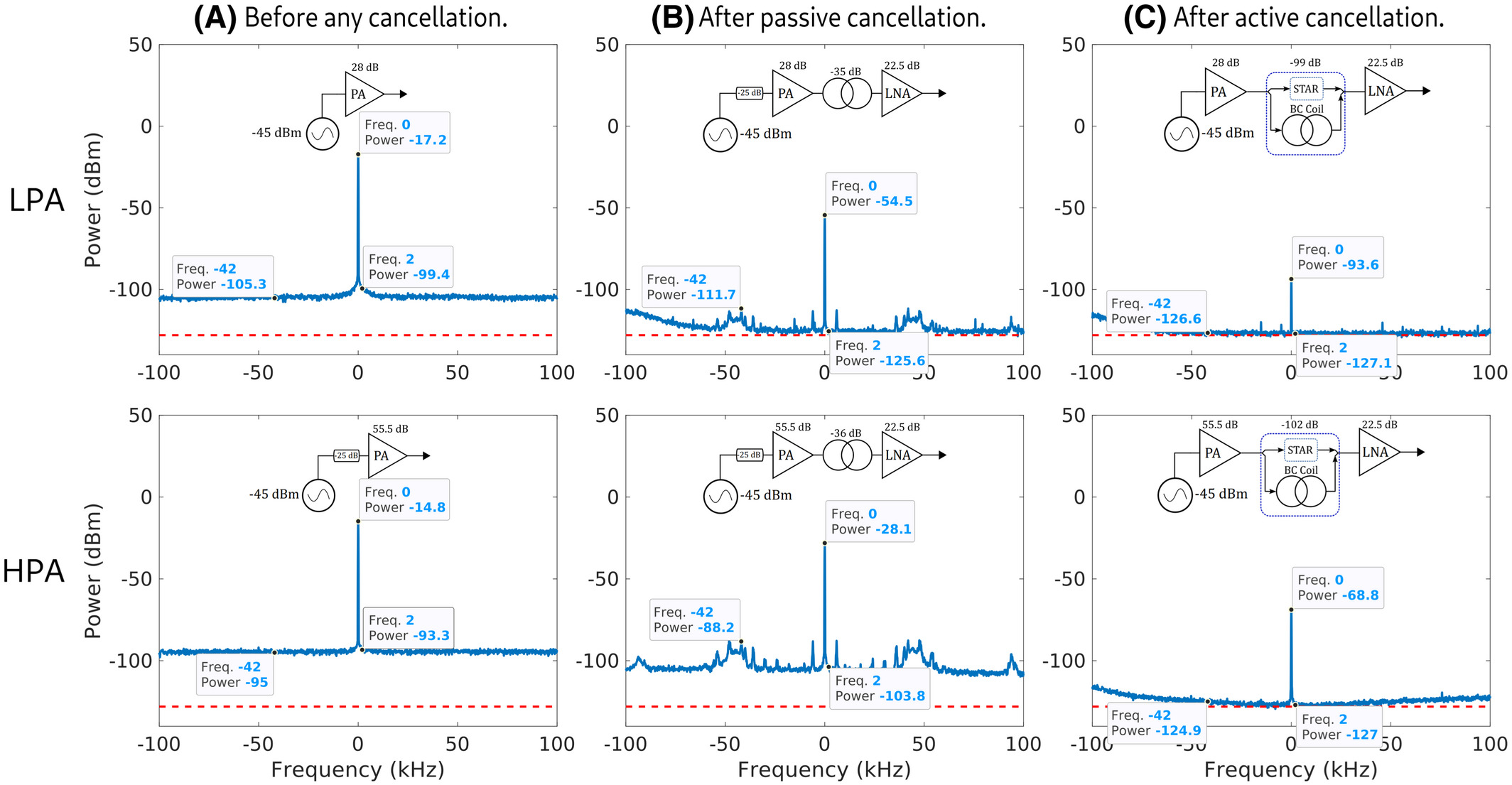Our PhD student Bilal Taşdelen et al. published an article titled ”Analysis and mitigation of noise in simultaneous transmission and reception in MRI”.
Abstract
Purpose
In simultaneous transmission and reception (STAR) MRI, along with the coupling of the excitation pulse to the received signal, noise, and undesired distortions (spurs) coming from the transmit chain also leak into the acquired signal and degrade image quality. Here, properties of this coupled noise and its relationship with the transmit amplifier gain, transmit chain noise density, isolation performance, and imaging bandwidth are analyzed. It is demonstrated that by utilizing a recently proposed STAR technique, the transmit noise can be reduced. The importance of achieving high isolation and careful selection of the corresponding parameters are demonstrated.
Theory and Methods
A cancellation algorithm, together with a vector modulator, is used for transmit‐receive isolation. The scanner is modeled as a pipeline of blocks to demonstrate the noise contribution from each block. With higher isolation, coupled transmit noise can be reduced to the point that the dominant noise source becomes acquisition noise, as in the case for pulsed MRI. Amplifiers with different gain and noise properties are used in the experiments to verify the derived noise‐transmit parameter relation.
Results
With the proposed technique, more than 80 dB isolation in the analog domain is achieved. The leakage noise and the spurs coupled from the transmit chain, are reduced. It is shown that the transmit gain plays the most critical role in determining sufficient isolation, whereas the amplifier noise figure does not contribute as much.
Conclusion
The transmit noise and the spurs in STAR imaging are analyzed and mitigated by using a vector modulator.
For more; https://onlinelibrary.wiley.com/doi/full/10.1002/mrm.28782
